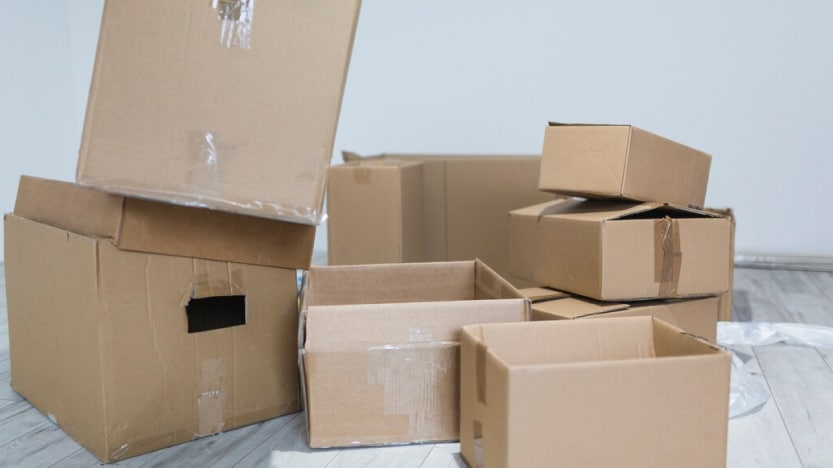When it comes to packaging, choosing the right material is crucial for the success of your business, especially in eCommerce. You want to ensure that your products reach customers in perfect condition while also showcasing your brand effectively. Two common packaging materials are cardboard and corrugated boxes, but many people use the terms interchangeably without understanding the key differences. In this article, we will break down what these materials are, how they differ, and how to decide which one is best for your needs.
What is Cardboard Box?
Cardboard is a popular packaging material that you’re probably familiar with. It’s used for a variety of purposes, including packaging products like cereal boxes, greeting cards, and even shoe boxes. Cardboard is essentially a thick paper stock made from paper pulp, which is pressed together to form sturdy sheets.
When you think of cardboard, imagine the thin yet firm paperboard you often encounter when shopping for products that don’t require much protection. This material is lightweight and easy to work with, making it perfect for packaging consumer goods that are less likely to break or be damaged during transit. Cardboard is widely used for packaging things like books, clothes, and small electronics.
There are a few different types of cardboard, depending on the way the paper pulp is processed. Some common types include:
- Paperboard: This is the most common form of cardboard, used for things like cereal boxes, greeting cards, and food packaging.
- Corrugated Fiberboard: This is thicker and often used for heavier products or items that need a bit more protection.
- Cardstock: This is used for more lightweight packaging and is often used for items like notepads or small stationery.
While cardboard is versatile and widely used, it’s important to note that it does have its limitations. Cardboard by itself isn’t the best option for shipping heavy or fragile products. It can be too thin and lacks the strength to withstand the pressure and impact that can occur during transportation.
What is Corrugated Box?
Corrugated material is a step up from cardboard. It’s made up of three layers: an inner liner, an outer liner, and a medium (the fluted, wavy layer between the liners). The combination of these layers creates a much sturdier and more durable material. This type of packaging is commonly used for shipping products because it offers superior protection against damage during transit.
Corrugated boxes are often used for shipping heavy items or products that are more prone to damage, such as electronics, glassware, or fragile goods. The fluted medium between the liners acts as a cushion, absorbing impacts and shocks that would otherwise damage the contents inside. Corrugated boxes can also help protect products from moisture and sudden temperature changes, which makes them perfect for items that need extra care during the shipping process.
Just like cardboard, corrugated boxes come in different types. The most common types are:
- Single Wall Corrugated Boxes: These are the most common type of corrugated boxes and consist of two liners and one medium. They are ideal for shipping most products, including electronics, clothes, and food items.
- Double Wall Corrugated Boxes: These boxes have two layers of medium and three liners, which makes them stronger and better suited for shipping heavier items or products that need extra protection.
- Triple Wall Corrugated Boxes: As the name suggests, these boxes have three layers of medium and four liners, providing the highest level of protection. They are used for shipping extremely heavy or fragile items.
Differences Between Cardboard and Corrugated Box
While cardboard and corrugated boxes may look similar at first glance, they are actually quite different in terms of structure, durability, and best use. Understanding these differences will help you make the right choice for your packaging needs.
Structure
- Cardboard: As mentioned earlier, cardboard is made from a single sheet of thick paper stock. It is solid but relatively thin, which limits its strength and durability.
- Corrugated: Corrugated material is made from three layers—two flat liners and a fluted medium between them. This layered construction gives corrugated boxes much greater strength and durability.
Durability
- Cardboard: Cardboard is more fragile and can easily bend or tear under pressure. While it’s suitable for lightweight items, it’s not the best option for shipping items that are heavy or fragile.
- Corrugated: Corrugated boxes are far stronger and more durable due to the fluted medium that absorbs impact. They can withstand higher pressure and are more resistant to damage from impacts, moisture, and temperature fluctuations.
Protection
- Cardboard: Cardboard offers minimal protection. If you’re shipping a delicate item, you’ll likely need to use additional packing materials, such as bubble wrap or foam inserts, to prevent damage.
- Corrugated: Corrugated boxes provide superior protection for your products. The extra cushioning from the fluted medium helps absorb shocks and protects your items from external forces, making them the better option for shipping fragile or high-value items.
Weight
- Cardboard: Cardboard is lightweight and easy to handle. If you’re looking for a material that’s easy to work with and doesn’t add much weight to your shipment, cardboard is a good option.
- Corrugated: While corrugated boxes are stronger, they can be slightly heavier than cardboard. However, their added weight is still relatively light compared to other materials like plastic or metal.
Cost
- Cardboard: Cardboard is generally less expensive than corrugated material. If you’re shipping lightweight items that don’t require much protection, cardboard can be a cost-effective choice.
- Corrugated: Corrugated boxes are typically more expensive than cardboard due to the extra layers of material and the added strength they provide. However, they offer better value for businesses that need to protect fragile or heavy products.
Customization
- Cardboard: Cardboard is relatively easy to customize. You can print logos, designs, and other branding materials directly onto the surface of the cardboard.
- Corrugated: Corrugated boxes are also customizable, and you can print logos and branding materials on the surface. However, since corrugated material is thicker, it may be more challenging to achieve the same fine detail as you would with cardboard.
Environmental Impact
- Cardboard: Both cardboard and corrugated boxes are recyclable, but cardboard may have a higher percentage of virgin material in its production, which can increase its environmental impact.
- Corrugated: Corrugated material is made from recycled paper in many cases, which makes it more environmentally friendly. Additionally, because of its durability, corrugated packaging can be reused more times before it needs to be recycled.
Here’s a table summarizing the key differences between Cardboard and Corrugated boxes:
| Feature | Cardboard | Corrugated |
|---|---|---|
| Structure | Made from a single sheet of thick paper stock. | Made of three layers: two flat liners and a fluted medium. |
| Durability | Less durable, prone to bending and tearing. | Stronger and more durable, withstands shocks, pressure, and moisture. |
| Protection | Provides minimal protection, requires additional packing materials. | Provides superior protection, ideal for fragile and heavy items. |
| Weight | Lightweight and easy to handle. | Slightly heavier, but still lightweight compared to other materials. |
| Cost | More cost-effective, cheaper than corrugated. | More expensive due to the added layers and strength. |
| Customization | Easy to print logos and designs, but less detailed. | Customizable, but may be harder to achieve fine detail due to thickness. |
| Environmental Impact | May contain more virgin material, impacting sustainability. | Often made from recycled material, more eco-friendly. |
| Best For | Small, lightweight items like books, clothes, and stationery. | Heavy, fragile items such as electronics, glassware, and fragile goods. |
Get Quote and Save UPTO 70% on your next shipping
Final Thoughts
Both cardboard and corrugated boxes have their own unique advantages and are suitable for different types of packaging needs. If you’re shipping lightweight, non-fragile items, cardboard is a cost-effective and easy-to-use material. However, if you’re dealing with heavier, fragile, or high-value products that require extra protection, corrugated boxes are the better choice due to their added strength, durability, and ability to protect against shocks, moisture, and temperature changes.
FAQs
What is the primary difference between cardboard and corrugated boxes?
Cardboard is a single, thick sheet of paper, while corrugated boxes are made of three layers: two flat liners and a fluted medium, making corrugated stronger and more protective.
Can I use cardboard for shipping fragile items?
Cardboard may not be ideal for fragile items as it lacks the durability and protection needed. It’s better for lighter, less delicate products. Corrugated boxes are a better choice for shipping fragile goods.
Are corrugated boxes recyclable?
Yes, corrugated boxes are recyclable and environmentally friendly. They can be reused multiple times, making them an eco-conscious choice for packaging.
Is cardboard stronger than corrugated material?
No, corrugated material is much stronger due to its layered construction, providing extra protection against shocks, moisture, and pressure. Cardboard is more suitable for lightweight packaging.
Can corrugated boxes be printed with logos and designs?
Yes, corrugated boxes can be printed with logos and designs, although finer details may be harder to achieve compared to cardboard. Still, they can be customized for branding.
Are cardboard boxes cheaper than corrugated boxes?
Yes, cardboard boxes are generally more affordable than corrugated boxes because they are made from a single layer, which reduces production costs.
How do I choose between cardboard and corrugated for my product?
Choose cardboard for lightweight, non-fragile products. Opt for corrugated boxes if you need to ship heavier, fragile, or high-value items that require extra protection during transit.

I’m Tammy Waller, a supply chain and logistics specialist with over 10 years of expertise. I’ve been an author and SFL employee for over 10 years.
As an author, I’ve been able to teach others. I love guiding users through supply chain and logistics operations.
I have substantial experience managing logistics operations, supply chain management, transportation, inventory management, and warehousing in shipping-moving and logistic services. I’ve worked on many worldwide logistics and supply chain projects, honing my abilities in negotiating rates, scheduling shipments, and managing vendors.



